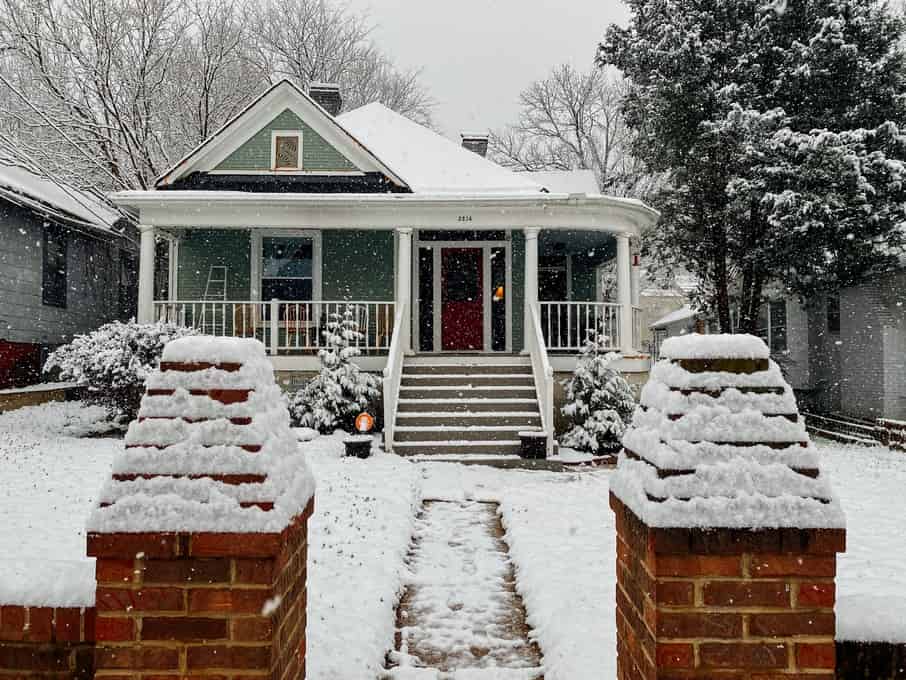With winter upon us it’s important to make sure that we’re protecting our plants. Depending on your plants, this could mean a little or a lot of work for you. Today, we’re going to look at a couple of quick tips for protecting your plants in the winter, and what you can do to make sure they look just as beautiful next spring.
Avoid Frosts
First off, the majority of plants don’t do well when it gets cold enough to frost. You should make sure that you bring any plants indoors before you get your first frost. The reverse is also true, don’t bring any plants outdoors too soon to avoid an early frost.
This is primarily for those gardeners that grow both outdoors and indoors, and bring their plants in during the cooler months. This is a great way to grow, but take care to keep your plants away from freezing temperatures. While a handful of plants can survive a frost, the majority will be damaged by it.
Keep Your Plants Warm
Another step is to keep your plants warm, usually around a comfortable room temperature during the winter. This is usually a concern for those keeping their plants in a basement, garage, or other room that stays particularly cool.
Many plants won’t grow as well if the temperature drops too low. While this usually isn’t as damaging as a frost, it can still be problematic for your plants. If you’re looking to see new growth during the winter then make sure the environment is conducive for that.
Avoid Drafty Windows
Drafty windows are another source of stunted growth for indoor plants during the winter. The constant barrage of cool air is not something that plants enjoy, and can end up harming them over time.
Make sure that the windows your plants are near are well insulated and don’t allow lots of cold air to get in. You can also try moving your plants back a few feet to minimize their exposure.
Keep Distance From Heat Sources
The opposite of the previous point, being too close to a source of heat can also be damaging. This is often a vent for a furnace, but could also be things like space heaters or other sources of warmth.
Having too much heat can be as damaging to your plant as too little. In many cases, this will lead to your soil drying out quicker, and this can mean your plant isn’t getting enough water. If a plant is near a source of heat be diligent in checking its water levels and be ready to water a bit more often. In extreme cases, it can also burn out the leaves, so be on the lookout for that as well.
Understand Winter Changes
During the winter there are two big things that can happen that many gardeners aren’t prepared for. They are the dormancy of many plants and the reduced intensity of sunlight.
Many plants experience a period of dormancy in the winter, even when grown indoors. This means that their growth slows down and their needs for water and fertilizer go down as well. If you maintain your regular care schedule it may be too much and actively harm your plant. Make sure to understand your plants’ growth patterns and plan accordingly.
The sunlight is also generally less intense in the winter. Here in the midwest the winter months are dark, and we get a lot less sunlight than in the summer. For light hungry plants that means you’ll likely need to use a grow light to supplement.
Cover Outdoor Plants and Add Mulch
For milder areas you can get by leaving plants outside during the winter. With a few steps of preparation your plants could potentially spend the whole winter outdoors.
A good first step is to simply cover your plants with a tarp or even a cardboard box. Any sort of covering adds insulation and helps your plants conserve heart. If the winter is mild, and doesn’t freeze too often, this can be enough to keep your plants from freezing.
For more insulation, you can also add additional mulch around your plants. Mulch is a great insulator, and works like the covering to keep your plants warm. While this won’t stop a hard midwest freeze, for areas that get mild winters it can be enough to allow you to keep your plants outdoors year round.







